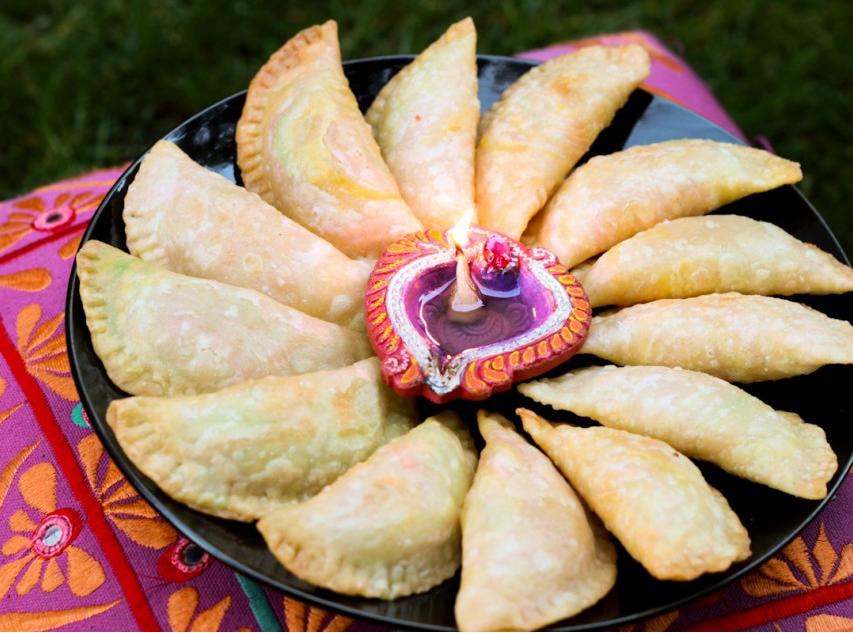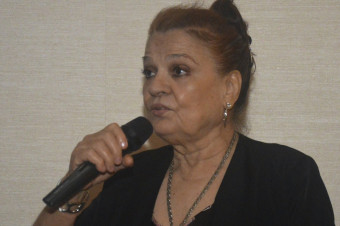Neuros
The Festival Of Lights, The Festival Of Food
If you live in a pukka Hindu neighbourhood, you’ll discover for the next week or so, discount that every wisp of smoke coming out from every kitchen window smells the same. In the run-up to India’s best known festival, there are hands moving in unison each afternoon, next to gas-stoves, roasting in shallow kadais fine semolina or gram flour, spooning in blobs of ghee to keep dryness at bay. Once the raw odour gives way to a delicious aroma, the hot utensil is taken off the stove and its contents allowed to cool. Then carefully measured fine sugar-powder is fingered through it and some crushed cardamom/nutmeg added for flavour before rolling little balls of the dough between the palms to make delicate-to-handle, no-need-to-bite, melt-in-the-mouth ladoos. If you can afford the ‘dry-fruit’ ingredient, then the chips of almonds/pistas/cashews/raisin will break the monotony of the bolus.
We west-coasters don’t have milk-based sweets (like rasgullas or gulab-jamuns). Our cows/buffaloes provided just enough lactation for the last-born child, the presently pregnant daughter-in-law and the odd guest. Our ancestors therefore preferred the alternative source of edible festive goodness: grated, fresh coconut flesh. That, combined with jaggery or sugar and gently heated, becomes a slightly chewy, highly addictive stuffing for neuros. Those with roots in Maharashtra or Karnataka, make the complicated anarsey, which need pounding of fermented rice dough over four days, then rolling and frying the ‘puri’-like biscuits which are finally dipped into thick syrup and sprinkled over with poppy seeds. Less difficult to make but utterly delicious are the delicate chirotey, the Indian equivalent of strudel.
If you’re not a ‘sweet’ person, at the other end of the festive goodies are savoury lot. If you have tough gums and teeth to match, try the kadbolees. They’re made of rice flour and butter dough, rolled and curled into small bracelets and fried to a dark brown. Or the spiky, spicy chakalis, my favourite, with talented housewives make and sell all year around these days.
The savoury chivdas, made of roasted or deep-fried flakes of puffed rice, come in several flavours. Some are doused in masala powders, others are lightly seasoned with mustard seeds, yet others smell strongly of garlic. Some flakes are ‘nylon’ thin, others are about 2mm thick. All chivdas are generously studded with groundnuts or cashew seeds, slivers of coconut flesh, all fried before being mixed with the base of flakes. The curry-leaves and asafoetida make their not-so-subtle presence felt.
Kadbolees
The sequence of eating depends on the eater. If you’re having tea or some other milky hot beverage whilst spending a Diwali evening with a friend, have the sweets first, and break the taste with a savoury item. If you’re into beer or hard liquor, I’d suggest you dig into the savouries only until you’re done with the glassware, then take the sweets, one at a time.
If you’re on a diet to lose weight to look good, postpone the programme. If your diet is restricted because of medical reasons, eat with care and under supervision. I know from experience that willpower is severely tested at this time of the year, ‘specially when cruel acquaintances place small bowls of hard to refuse shankar-parras within grasping distance.
Neighbours send platefuls of home-made goodies to each others’ homes. The plates contain the same items, more or less. Unusually, each item, made by different hands, tastes different. It’s true, God lies in the details. Family secrets and tricks are kept unshared. Viva la difference, I say, we eaters don’t mind at all.
If you have space to spare in your stomach after consuming all the Diwali goodies, remember to get yourself invited for a Diwali breakfast or lunch. Traditional stuff that never makes it to restaurant menus includes a variety of recipes that use puffed or flattened rice, and curries made with that day’s catch. Since Diwali stretches over four days, you won’t run out of meals/hosts.
Every time you feel guilty about the calories consumed, stop yourself from thinking further. Take a deep breath, figure out which window the nicest smell is coming from (this is a difficult exercise, so if you can’t decide, just choose the home closest to you) and walk into that house. It’s Diwali, everyone’s welcome to visit and share and eat what’s made. In return, you have to give friendship. ‘Tis the season to be jolly, Indian-style.






